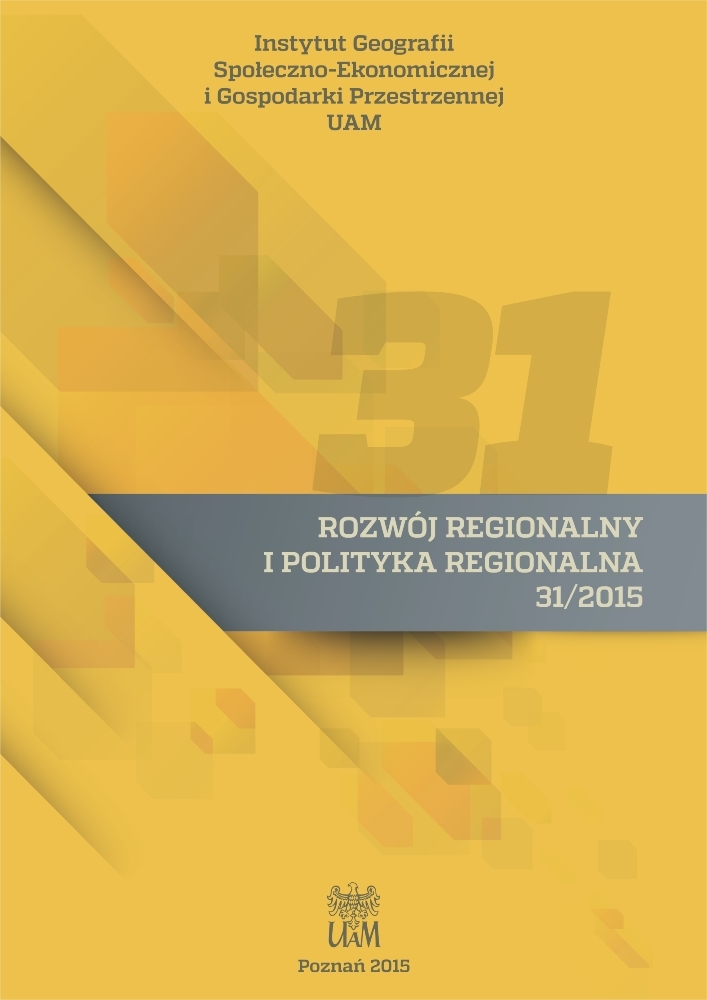Abstract
The article explores critical point of view of the two phenomenon indicated postindustrial phase of the urban evolution: “studentification”, and tourist industry (symbolized by the Bilbao/Guggenheim effect). Both exemplify re-valuation of the position of external users of the city which took place in the postmodern urban relations. It turns form the marginal position of “symbolic others” to the position of “significant user” – the one of the main elements of the urban investment policy. The author shows public statistics related to tourism, the “attendance” of students, and the data from the local property market, using interpretations from the literature (D. Smith, P. Hubbard, L. Vicario, M. Martinez). The observable tendencies suggested gentrification more than a revitalization as a result of the developmental factors. Finally the author climes necessity of sustainability of the local urban policy, and reinterpretation of the concept of contemporary metropolis (compare: G. Martinotti) in the light of the crisis situations (since 2008).References
Buravoy M. 2005. For Public Sociology. American Sociological Review, 70. DOI: https://doi.org/10.1177/000312240507000102
Bures R.M., Cain C. 2008. Dimensions of Gentrification in a Tourist City (http://paa2008.princeton.edu/papers/81623; dostęp: luty 2015).
Castells M. 2000. Urban sustainability in the information age. City: Analysis of Urban Trends, Culture, Theory, Policy, Action, 4, 1. DOI: https://doi.org/10.1080/713656995
Castells M. 2011. Społeczeństwo sieci. T. 1. Wydawnictwo Naukowe PWN.
Costa N. 2015. Remembering Guido Martinotti as an Applied Sociologist to the Urban Mobilities and Local Community. Advances in Applied Sociology, 5. DOI: https://doi.org/10.4236/aasoci.2015.51006
Vicario L., Monje M.M. 2003. Another ‘Guggenheim Effect’? The Generation of a Potentially Gentrifiable Neighbourhood in Bilbao. Urban Studies, 40, 12. DOI: https://doi.org/10.1080/0042098032000136129
Martinotti G. 1996. The new social morphology of cities „Management of Social Transformations – MOST”. Discussion Paper Series, 16 (http://www.unesco.org/most/martinot.htm; dostęp: kwiecień 2015).
Nowak M. 2011. Dane i interpretacje socjologiczne. [W:] B. Kaźmierczak, S. Palicki, M. Nowak, D. Pazder (red.), Oceny rewitalizacji. Studium zmian na poznańskiej Śródce. Wydawnictwo Naukowe Wydziału Nauk Społecznych UAM, Poznań.
Nowak M. 2014. Śródka po 7 latach rewitalizacji. Metodologiczny wtręt i interpretacja socjologii procesu rewitalizacji. [W:] K. Derejski, J. Macyra, S. Lisiecki, R. Macyra (red.), Nowe życie w mieście. Dylematy rewitalizacji. Wydawnictwo Naukowe UAM, Poznań.
Nowak M. 2014. Revitalisation of Cities in the Absence of Legislative Support: The Case of Poznań. Polish Sociological Review, 1(185).
Palicki S. 2011. Wprowadzenie. Czym jest rewitalizacja, a co nią nie jest? [W:] B. Kaźmierczak, S. Palicki, M. Nowak, D. Pazder (red.), Oceny rewitalizacji. Studium zmian na poznańskiej Śródce. Wydawnictwo Naukowe Wydziału Nauk Społecznych UAM, Poznań.
Pluciński P. 2013. Miejskie (r)ewolucje. Radykalizm retoryki a praktyka reformy. Praktyka Teoretyczna, 3/9. DOI: https://doi.org/10.14746/prt.2013.3.6
Smith D.P., Hubbard P. 2014. The segregation of educated youth and dynamic geographies of studentification. Area, 46,1. DOI: https://doi.org/10.1111/area.12054
Stryjakiewicz T., Męczyński M., Stachowiak K. 2009. Sektor kreatywny w poznańskiej gospodarce. Uniwersytet im. Adama Mickiewicza w Poznaniu, Instytut Geografii Społeczno-Ekonomicznej i Gospodarki Przestrzennej, Poznań (http://creativepoland.eu/documents/bazawiedzy/n_64da128_sektor_kreatywny_w_poznanskiej_gospodarce.pdf; dostęp: czerwiec 2015).
License
Copyright
© 2015 IGSEiGP, Uniwersytet im. Adama Mickiewicza w Poznaniu
OPEN ACCESS
